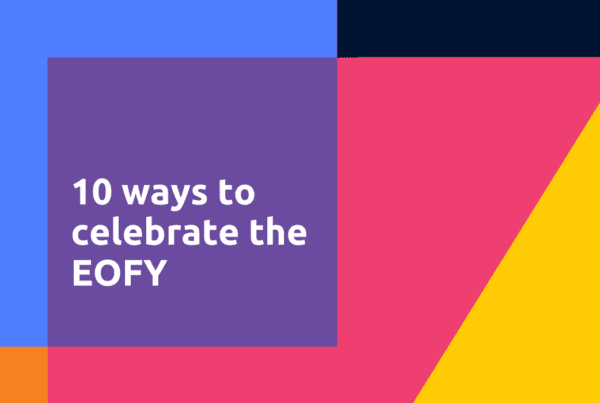It’s 9am and a crowd has gathered in a school hall in central Wellington. This is remarkable not only because it’s 9am on a Saturday, but also because the Webstock after party was the night before. Cups of coffee are understandably clutched in a number of hands. However, despite the probable hangovers, there’s a buzz of expectation and excitement for what’s about to come. So why am I spending my Saturday in a school hall when I could be in bed? I’m here to learn. About user experience and information architecture specifically. It’s more fun than it sounds.
The conference we’ve all gathered for is Architecting Happiness, a free one day conference held in Wellington and run by Optimal Workshop. With nine international and local UX professionals on the bill, a diverse crowd of people from business, design, development and web are here to learn about how to put the user first A.K.A. the art of user experience (UX) design. For those unfamiliar with UX, it really pertains to any and all parts of a product, service or brand that affects the end user or customer. That sounds like I’ve just said everything is user experience design. And in a way it is. There are many parts to UX design, but when you look at it like I’ve described above, you can start to see why it’s so important for businesses to bake UX into their processes right from the start, even from the very first client meeting. It’s a broad and exciting field to be working in, and increasingly businesses are finding that good user experience design is critical to their growth and success. With this in mind, my fellow conference attendees and I are sponge-like on this muggy Saturday morning – ready to soak up wisdom, advice, and copious amounts of coffee. From my notebook to you, these are my conference highlights.
It’s not about getting people to a goal. It’s about getting people out of their seats.
Jesse James Garrett was the keynote speaker at Architecting Happiness, and for good reason. Not only has he been in the user experience game for many years (he is the founder of Adaptive Path, a premier user experience design consultancy company), he also wrote ‘The Elements of User Experience,’ a well-known and oft-referenced book on the subject. In fact my co-worker had been looking at this diagram of Garrett’s only that week, with other speakers also referring to it throughout the weekend.

The Little Man from the San Francisco Chronicle
Garrett’s talk focused on the way we perceive the UX designer’s job, within and outside of the profession. Rather than seeing UX designers as craftsmen using a particular medium, he advocated that they are in fact conductors, bringing together various pieces to work in harmony towards a common goal.
As many of us in this field are aware, UX design is much more than its individual parts – e.g. the user interface, the device, the user’s senses and perception. It is really the job and skill of the adept UX designer to orchestrate these parts to make an experience that positively impacts the user and how they interact with what you’ve created.
Garrett’s reference to the San Francisco Chronicle’s Little Man rating system particularly stuck in my mind as a reminder of what experience designers aim to achieve. For us, the end game is not to simply push a user from the landing page, to the product description and finally to the buy button, (although linear pathways like this does make up a part of what we do). In the context of the Little Man, it is the equivalent of checking his ticket and getting him to his seat; necessary, but fairly banal.
No, what the UX designer wants is to create an experience for users that gets them out of their seats – creating excitement and passion. Users feel as if the experience has met their needs in some way, or even changed how they do something entirely. Perhaps it has influenced their perception of the world, or has aided them in forming better habits, or to meet important goals. These are lofty aspirations for a profession where many outside of it still think that designers make things look pretty. Lofty or not, I think it relates back to what people quite often want to make – a difference. Garrett’s talk aided in reminding us of this.
Architect your own happiness
I’m sure many of us have found ourselves in a situation where we’re not very happy or content in our current jobs, and sometimes we can’t figure out why. Is it because we’re not doing the projects we’re passionate about? Is the work culture detrimental to our motivation and well-being? Have we just gotten a bit tired or has our work become stagnant? Matthew Magan highlighted these feelings and more in his talk about one of the most important user experiences – our own. How do we, as users of our jobs, our finances, our career paths, navigate through these experiences to hopefully find the best path for us? In answer to this, Magan shared his own career journey as a user experience designer, developer, and now professional scribbler. He revealed some of the choices he had to make as he changed careers and sought new opportunities, as well as the recent tragedy that put everything into perspective. From everything’s he’s learnt, Magan gave us his ten tips for architecting UX career happiness. You can find these (and his entire talk!) here.
Magan is the co-founder of the excellent UX resource and content website UX Mastery.
Fall in love with your users
Did you know that all you have to do to fall in love with anyone is to ask them these 36 questions and to stare into their eyes for four minutes? Zheng Li of Zing Design did, so she tried it. On her clients. According to her, it was as hilarious and awkward as you might expect, but also really good. Her point is that customers matter to businesses, they matter a lot, but that the art of retaining them can be tricky. Li says that the number one reason customers leave is that they feel you don’t care about them. This is important because of the 80/20 rule – according to Li, 20% of your customers will bring in 80% of your revenue and that even just a 5% increase in customer retention will account for a 95% increase in revenue. Considering that it’s around thirty times more expensive to acquire new customers, you start to see why getting your clients to fall in love with you and vice versa might not be the craziest idea. In an age when we often use the language of war to describe acquiring and retaining customers (e.g. target market), Li encourages us to instead treat them as love interests. Build relationships, get to know your customers, pay attention to important touch points where users might get confused, and help them out in times of need. Do this and your business will be better for it.
To read ‘To fall in love with anyone, do this,’ visit here.
Go wide, then go deep
A fairly crucial but often missed step in the UX design process is simply this – go wide before going deep. Going wide means developing lots of variations of a design, testing them, and then discarding the ones that don’t work. You repeat this process until you have one solution you know works well and that you can iterate further. Sounds straight-forward right? Well Dave O’Brien from TreeJack would agree, but even he’s fallen into the trap of only developing a few solutions, and then picking the first one that works (or even worse, the one you like best) to dig into more. While fleshing out and building on solutions is important, it’s better to take a look at a range of options before choosing any one of them. This way you can ensure that you have looked at lots of possibilities or combinations before striking the right one. If you follow the simple rule of going wide before going deep, you won’t just be refining your first idea, you’ll be refining your best idea.
Utilise the science of happiness
People are weird, I think we can all agree. But there are common ways that we react to and find opportunities for happiness that have been well-researched and analysed. Trent Mankelow, Chief Product Officer at Trade Me, reckoned that this ‘weird science’ could be used to help users in the digital space to find happiness, all while improving a product and gaining customers. It’s a win-win. Mankelow’s talk consisted of various ways to architect happiness online, followed by at times hilarious real-life examples from Trade Me’s own iteration process. I had so many ‘oh’ and ‘aha’ moments during this talk, but here are my top three.
- Loss aversion – We’re likely to feel twice the amount of sadness at losing something, than we are to feel happiness at gaining it. Therefore when it comes to upselling, you’re better off reminding people of what they’re missing out on, rather than the benefits they’ll gain by changing to a more expensive subscription plan.
- Give people a sense of mastery and progress – competence is an important happiness pillar.
- We’re happy when we get a bargain, so think carefully about what pricing categories you offer. Mankelow’s advice was that if you’ve got pricing tiers, continue to include the expensive option because even though not many people will opt into it, it’s presence will drive many to choose the tier below it.
After listening to Mankelow, it is clear that there is a real art to architecting happiness. I valued his talk both for its practical elements and how it emphasised the UX designer’s role as a deeply empathetic one. In many ways, it is no longer good enough to just research your key demographic if you want to push UX boundaries and connect with users. The ability to research and understand human nature and how we are evolving in a digital world is becoming increasingly necessary. For great UX research, I highly recommend the ideas page from Huge Inc., while for marketing Percolate’s free resource library is absolute gold.
In the end…
There were so many other good points and examples from the other speakers at Architecting Happiness that I wish I could reference it all. Hopefully the full videos will become available online soon, and I will be sure to link them here if they do. My biggest take away from the conference though was this – the UX community in Wellington is alive and well. The very fact that the organisers only had to send out one tweet before tickets sold out tells me that the local community is thriving and hungry, and indicates how people are increasingly placing value on user-centred design and business. It’s a good day when that happens.



